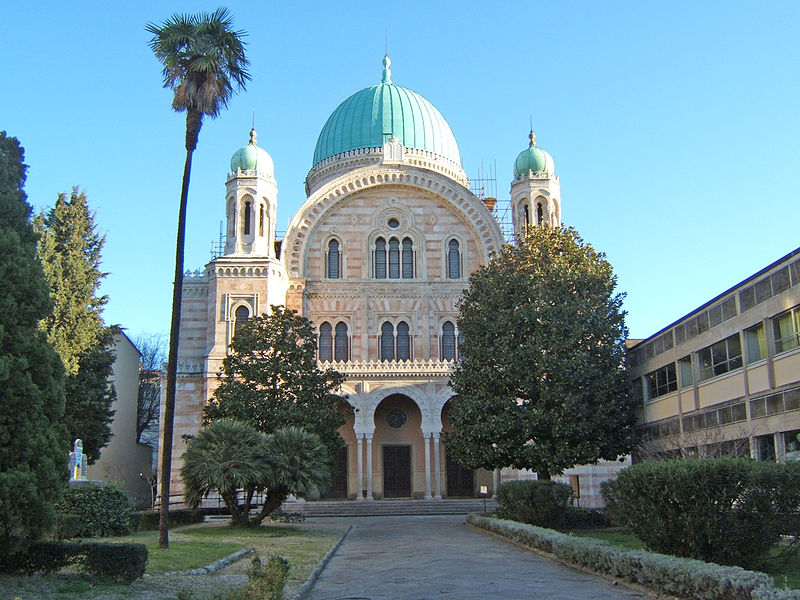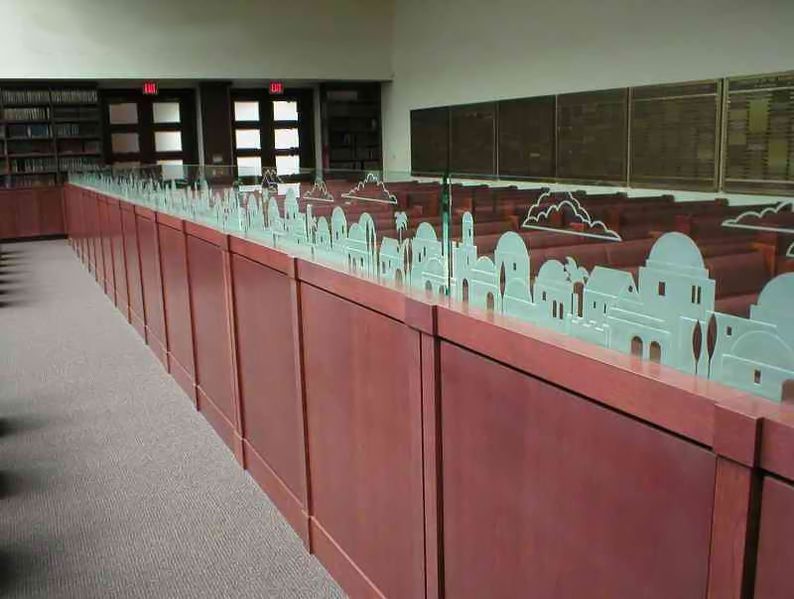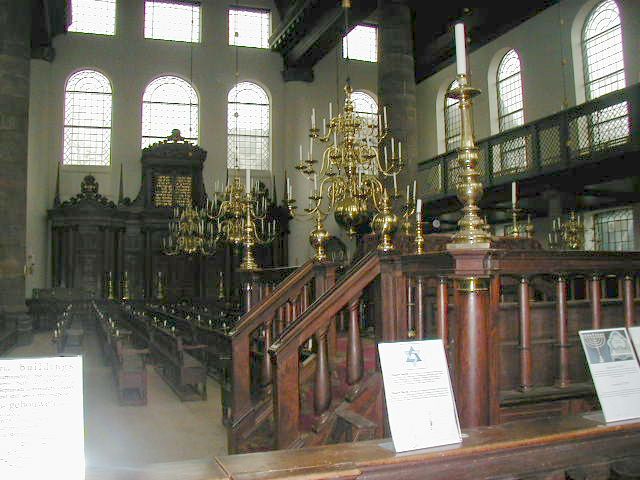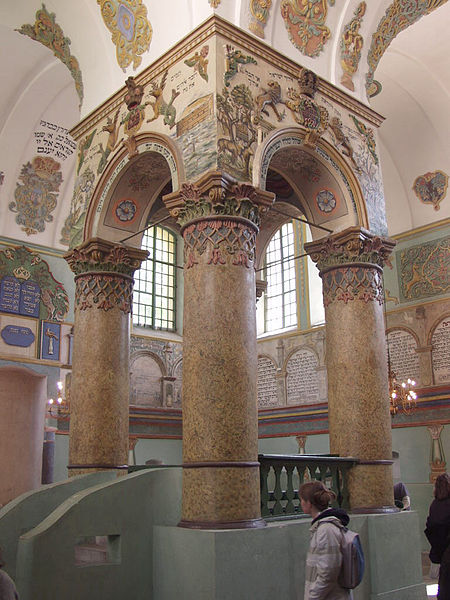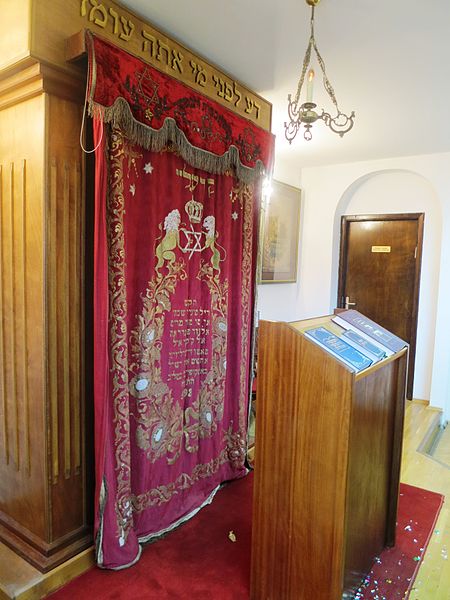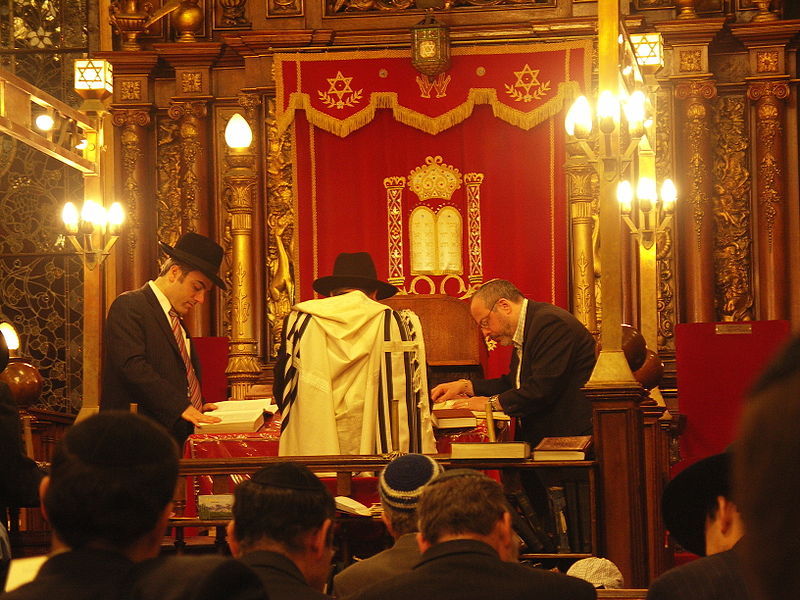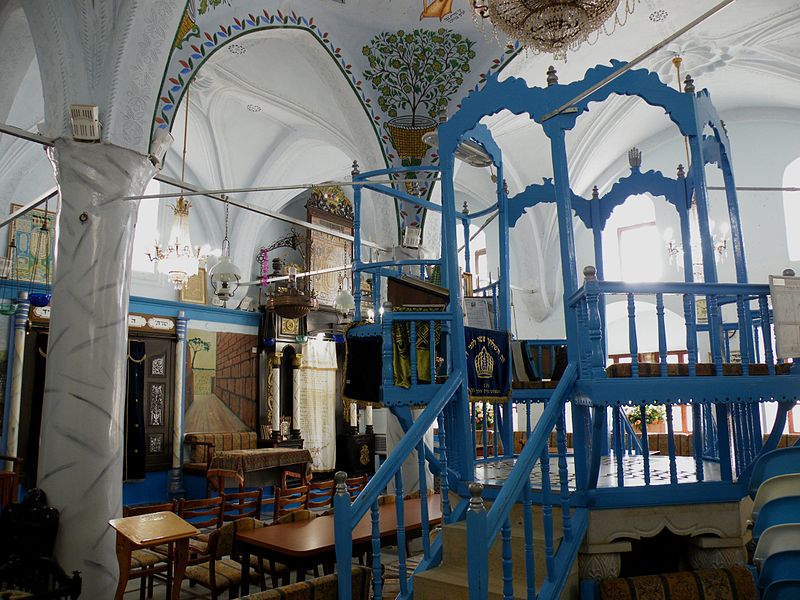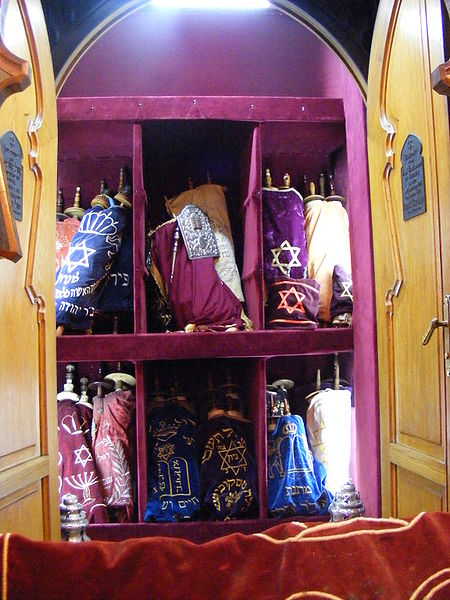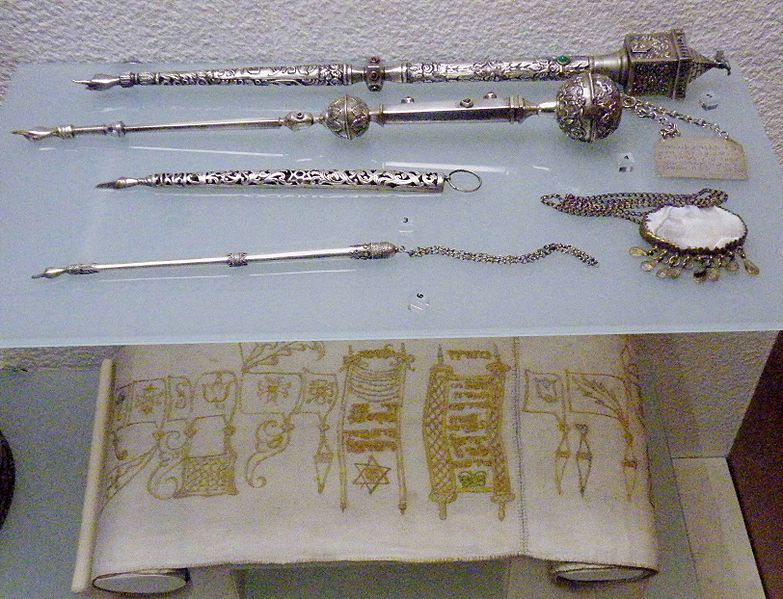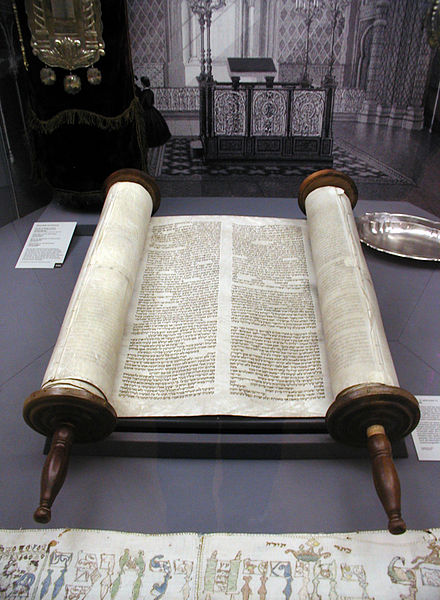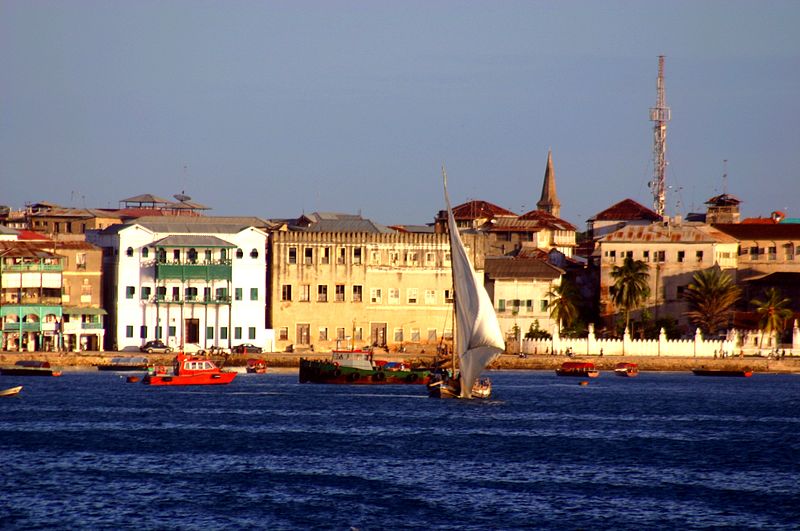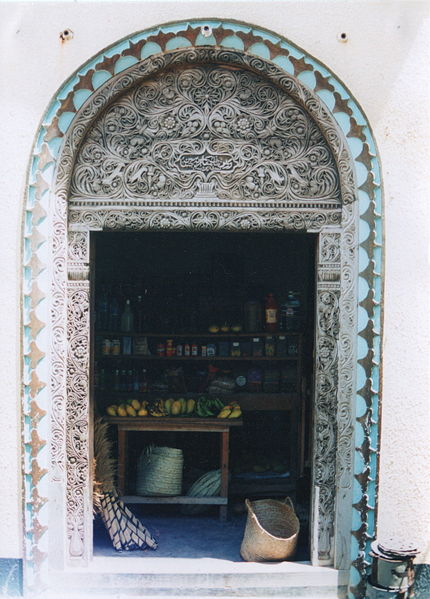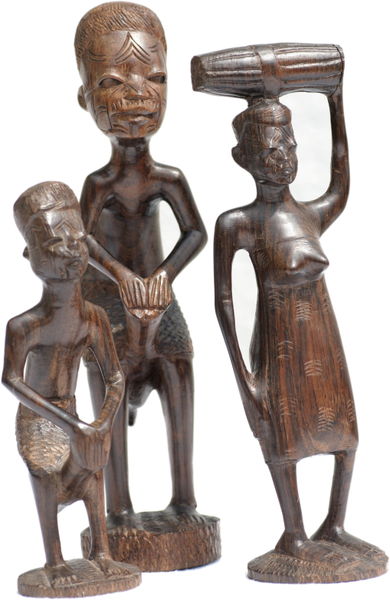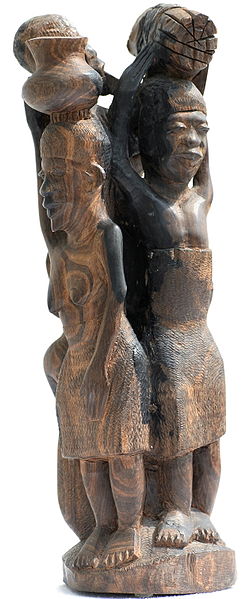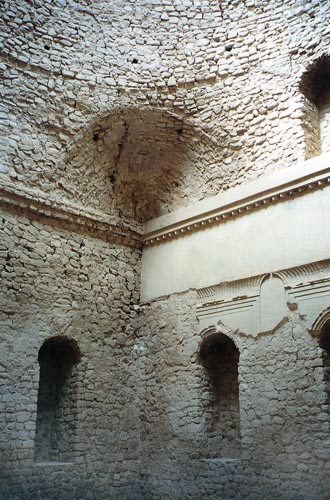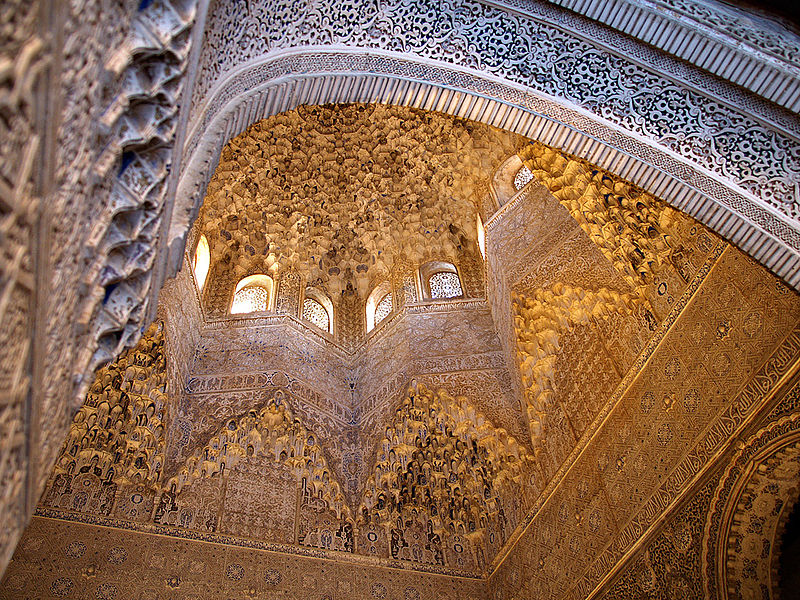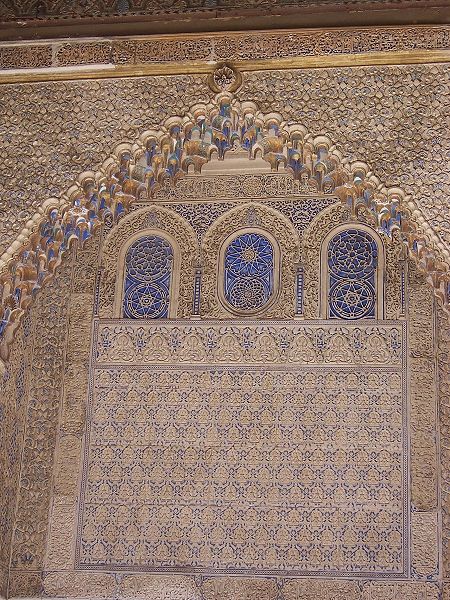Today’s blog post is taking us to the Jewish world and to synagogue architecture and vocabulary. Synagogues are called בית כנסת beth knesset in Hebrew, which means ‘house of assembly’. Other words for synagogue are בית תפילה beth t’fila, meaning ‘house of prayer’ or שול shul , a Yiddish term used by Jews of Ashkenazi descent, or אסנוגה esnoga, the latter one being a term used by Portuguese Jews. The English or western term ‘synagogue’ is derived from Greek συναγωγή synagogē which means ‘assembly’.
Synagogues have a large hall for prayer, and often also have some smaller rooms for Torah study, called בית מדרש beth midrash or ‘house of study’, and for social meetings and the like. Synagogues are consecrated spaces for prayer; however, communal Jewish worship can take place wherever a מִנְיָן minyan, i.e. 10 Jewish adults, assembles.
The architectural style of synagogues varies widely, and historically, synagogues followed the prevailing style of their location and time. An example is the Kaifeng synagogue, which looked like the Chinese temples of the region.
A central element of all synagogues is the בימה bimah, a table on a raised platform where the Torah scrollתּוֹרָה is read. The reading of the Torah is called קריאת התורה Kriat haTorah.
The Torah is called ספר תורה sefer Torah.
The Torah scrolls are kept in the ארון קודש Aron Kodesh or Torah Ark, a special cabinet which is often closed with an ornate curtain, the פרוכת parochet, which can be inside or outside the doors of the Ark. The Aron Kodesh is the holiest place in the synagogue and is reminiscent of the Ark of the Covenant אָרוֹן הַבְּרִית Aron haBrit which held the tablets with the Ten Commandments. The Ark is usually positioned in such a way that the congregation facing it faces towards Jerusalem. The seating plans of synagogues in the western world therefore usually face east, while synagogues in locations east of Israel face west. Sanctuaries in Israel usually face Jerusalem.
Another traditional feature of synagogues is a continually lit lamp or lantern, the Eternal Light נר תמיד ner tamid which is reminiscent of the western lamp of the מְנוֹרָה menorah of the Temple in Jerusalem, which miraculously remained lit perpetually. Many synagogues also have a large candelabrum with seven branches, reminiscent of the full menorah. Orthodox synagogues feature a מחיצה mechitzah, a partition dividing the seating areas of the men and women, or there is a seating area for the women located on a balcony.

